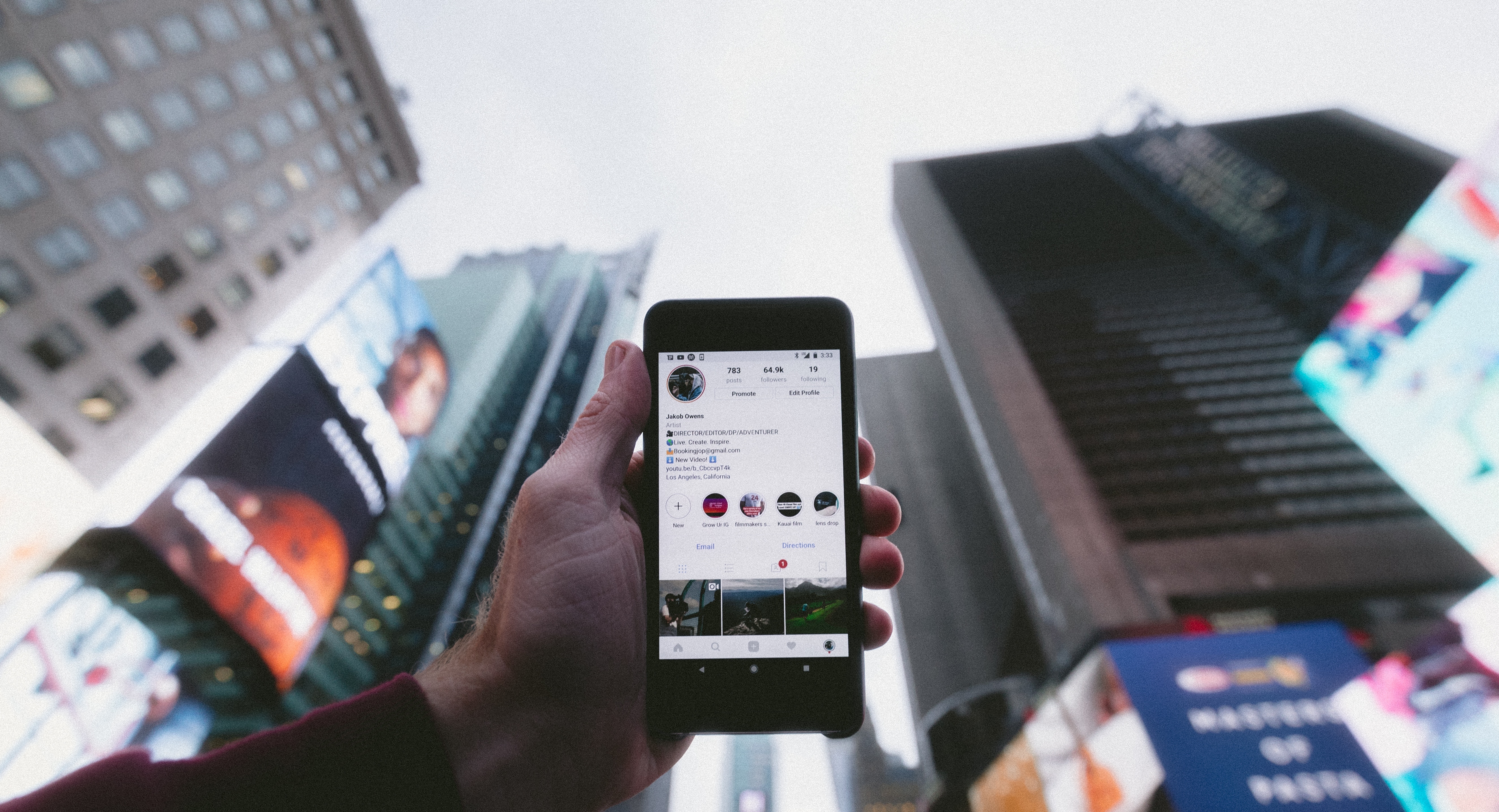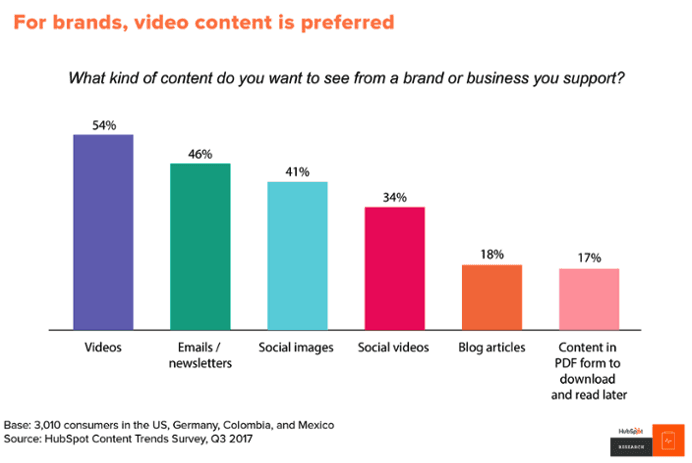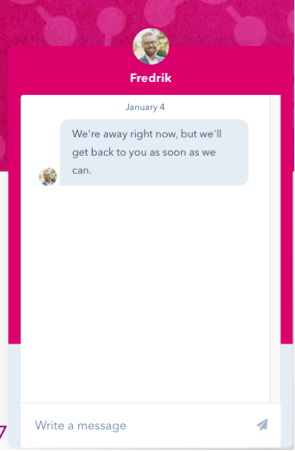The pace of change in digital marketing continues to accelerate in ways that can make it seem impossible to keep up. Yesterday’s advice seems passé today. What you thought would be the next big thing, is nothing but a memory the day after tomorrow.

Let's take a look at the emerging trends that you need to wrap your head (and your marketing budget) around.
Here are five truths that promise to shake up 2019.
1. Keyword stuffing is dead.
Gone are the days when you created pages of content stuffed with every keyword phrase you wanted to rank on. Today you need a more considered strategy that focuses on the topic areas essential to your business, while answering the questions your audience wants to know about.
Why? Because search has changed. People use longer, more conversational search queries. They ask questions of search engines and look for more specific results, such as “What Thai restaurants are near me?” or “What is the best inbound marketing agency in Stockholm?” not just “Thai restaurant” or “inbound marketing.”
This can be largely attributed to the rise in voice search. According to Location World, more than 40 percent of adults used voice-based search on a daily basis in 2016. And ComScore predicts that 50 percent of searches will be voice-based by 2020.
Today, you need to cluster your content around keyword topics and link supporting pages back to stronger “pillar” pages. It’s the internal page structures that matter more than the use of specific keywords. Your website content should reflect the way your customers search for information and answer their questions.
2. Organic reach on Facebook is dead.
It’s all pay to play now. Sorry. The days of unfettered access to a large and highly targeted audience on your social media networks has ended. Facebook has been putting the brakes on your content for several years now. Even followers who have “liked” your page have no guarantee of seeing the content you share there, unless you pay to promote it.

Creating an advertising account on Facebook can improve the reach of your organic posts.
As Facebook Marketing Expert Mari Smith said, “Facebook organic reach is so 2012.” We know, it’s sad, but it’s true. It’s been true since well before the beginning of 2018, when Mark Zuckerburg announced that Facebook was changing its news feed algorithm to show more posts from friends instead of businesses. He said Facebook was doing this because they were shifting their goal from helping people “find relevant content” to “have more meaningful social interactions.”
So there you go, Facebook has decided it’s all about social interactions, not content. Unless you pay. That changes everything, of course. Facebook is very happy to allow you to pay to have your business content appear in user’s social feeds.
In fact, advertisers gain exponential increases in visibility of their content regardless of whether those posts are part of a “paid boost” effort or not. One study by WordStream showed that having a Facebook advertiser account (regardless of what sort of ads are run) increases Facebook Page impressions (which means content impressions) by 126 percent and Facebook clicks by 96 percent.
3. Video is the new king of content.
You’ve undoubtedly noticed that video gets a lot of attention online. For social media networks, especially, video is THE format to use. Facebook rolled out its LIVE feature (live video streaming) to users between 2015 and 2016. LinkedIn added native video in 2017, and Instagram added native video hosting way back in 2013.

From Facebook Live to Instagram to Watch, video is the new king of content.
To ramp up its video offering and compete against Netflix, YouTube and Hulu, Facebook introduced Facebook Watch, a video streaming channel in August 2017 that focuses on episodic content. That means creating short (often less than 3 minutes), but regularly scheduled programs to grow an audience. Facebook Watch is still looking for quality content for this channel so you have an opportunity to get your content featured, if it makes the cut. You can apply here.
According to HubSpot research (and others), video improves your chances of creating content that your audience will actually engage with. In a 2018 survey, 54 percent of consumers said they wanted to see more video content from brands or businesses they support. HubSpot even introduced its own native video platform at INBOUND18.

Research shows consumers prefer video content.
How long should your videos be? The short answer is, it depends. One size fits all video is not the way to go. Your audience, purpose and medium (whether YouTube, Facebook, Instagram, or your website) should all play a role in the length of videos you create. Live streaming videos and those on your website aimed at later funnel stages, when customers are looking for more in-depth information, can be longer than those designed to attract the interest of first time visitors.
On YouTube, instructional step-by-step videos are often more than 15 minutes long. For Facebook news feeds, some studies have shown that attention falls off after 2 minutes, Twitter has a limit of 2 minutes, 20 seconds, and Instagram 60 seconds, but for Facebook Live, 10 minutes or more is recommended.
Also keep in mind that your videos should tell a story, provide instruction or showcase examples. Make sure your videos are not glorified advertisements. When making a video, you need to think like a screenwriter not a marketing copywriter. Tell a story. Show how something works or go behind the scenes. Interview people, and make it entertaining.
4. Click bait is not a marketing strategy.
Now more than ever, trust in marketing matters. Using dishonest or disingenuous tactics to drive traffic will only hurt you in the long run. Misleading headlines like “You won’t believe what happens when this woman drops her pen!” only frustrate and anger potential customers. This tactic might help faux-media sites inflate their viewer count for banner ad payments, but for businesses looking for genuine customers, it’s the kiss of death. Plus, these types of click-bait headlines are increasingly being filtered out by Facebook and Google algorithms that favor genuine content.
Even if you don’t resort to such blatantly cheap tactics, you should also consider whether you’re focusing on the right goals. Driving large amounts of traffic to your website for the sake of vanity metrics like page views isn’t doing you any good if the visitors aren’t potential customers. Focus more on your conversion rates and customer growth rates, and develop your content around what your ideal customer wants to know.
Good conversion rates help your rank in search engines as well. Google cares about delivering quality content to users. This is measured by how fresh it is (recently updated), how authoritative it is (sources and backlinks), and whether it delivers a good user experience. Some of the ways Google measures this is by how long someone stays on your page after clicking through, and whether people continue onto other pages of your site after reading the initial one.
Focus on developing an honest relationship with your customers about what you offer. Show examples and real case studies. Be authentic. Keep promises. Own up to your limitations, create a niche and deliver real, not inflated, information to your customers about what you offer.
5. Chatbots are here to stay.
Internet access is round-the-clock and customers visiting your website from various time zones expect service on their own terms. The advent of chatbots and AI technology makes it possible to provide answers to customer queries using pre-programmed scripts – even when you’re not available.
From basic customer questions to providing extensive online guides, chatbots can fill a hole in your customer sales and support funnel. But you need to use them carefully. There’s a place for chatbots (specifically to offer customers quick answers to simple questions or route customers to support teams), but half of your customers probably still prefer to speak to a human, according to a study by CGS.
To stay current in 2019, consider offering a chatbot on your website. It doesn't have to be anything extremely high-tech, just having a bot that can let customers know when you’ll be back online, or way to leave a phone number for a call back is enough. Did you know Hubspot Offers a free chatbot? Ask us how we can help you get started.

Marketing in 2019: It’s not all about you
If your marketing approach involves continuously talking about yourself (your company or your products), then you haven’t caught up to how marketing in 2019 works. Promotion in the digital age is not about self-promotion. It’s not about pushing your product or selling features. It’s about helping your customers. Stop talking about yourself. Put your customers first – answer their questions and help them find solutions.
A key way to do this is to use an Inbound approach to marketing. Give your prospects the information they need for the stage of the buyer’s journey they are in at the moment. Provide tips and information. Share customer stories. Create useful “how to” videos to help customers solve problems. Offer guides or handbooks using your expertise that provide real value to prospects.
By putting your customers first, and embracing new technology that helps you do that, you’ll be moving in the right direction in 2019.
Find out more about inbound marketing.
Get this free guide to inbound marketing.



